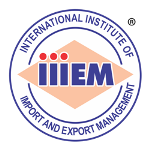
International market analysis can be applied to: discover new markets, search products and define public opinions on some strategies.
Although diverse, they all follow a fundamental step-by-step method:
- Define the purpose of the analysis
- Recognize the efforts needed to accumulate the analysis
- Know how to perform those operations
- Distinguish the sources of information required to accomplish your purpose
- Determine how to obtain data, i.e. in person, through the web, in hard copy
- Conduct further analysis of the data collected
- Make judgments based on the data collected
These general steps can be used as a how-to guide in market analysis. It is advisable that export import training is good if you pick up some useful information like steps one and three should be thoroughly perfected and carefully examined. Once the goals, purposes, and actions are fixed, and your meticulously planned analysis campaign completed, you will have adequate data to make accurate conclusions and judgments.
Primary and Secondary Data
There are two types of data to use in analysis:
Secondary Data
Secondary data (which is existing in nature) is data that is readily available on the internet or from official sources. It can be helpful data for companies in the early stages of market selection. Some models of secondary data are the Virtual Trade Commissioner and CIA World Facebook. It supports companies to learn where the largest markets are, which countries are developing the fastest, which demographic is the highest, and where the business trends are heading.
However, secondary data has its shortcomings. It can become out-of-date and irrelevant to your analysis. Also in a few developing countries, secondary data is either non-existent or obsolete.
Primary Data
Meanwhile, primary data is paperwork and analysis that you have prepared or conducted yourself. Primary data is normally performed using these methods:
- Observation
- Experimentation
- Discussions and Surveys
- Expert Evaluation
Sources of Data
- Secondary Sources
- Country Reports
- Studies in Business Newspapers
- Books
- Articles by Consulting Firms
- Trade Commissioners’ Reports
- Reports from Commercial Banks or Foreign Organizations
- Primary Sources
- Corporate Yearly Reports
- Records of Shareholders Meetings
- Corporate Websites
- Company Product Catalogs
- Personal Discussions with Business Executives or with Business Clients
- Market Surveys and Focus Groups
- Using the Internet Efficiently and Effectively
The internet is perhaps the excellent business tool you have. It is cheap, simple to use and a worldwide resource. You can use it to collect market data, analyze specific markets both industry and geographic, educate yourself about country customs, connect with potential partners and classify contacts that will be helpful you to in the market(s) you have chosen and provide you with a marketing platform that can attract customers and potential partners alike.
Value of Analysis
In the end, the goal of the market analysis is to consolidate data from a variety of sources to make inferences and judgments on new/existing strategies. It enables your company to address preferences, trends and cultural forces and work on opportunities that you might not have figured. It effectively gives you fresh data on your particular targeted group and is vital to your success in a new market.
You can write to us at ahm(at)iiiem.in to learn more such expert techniques coming straight from professional export analysts.

This is great information for a statistics course but would you advise taking a more readable summary of already researched international trade data from a site like Happily Trade Exim?